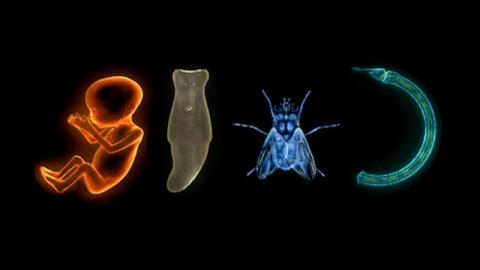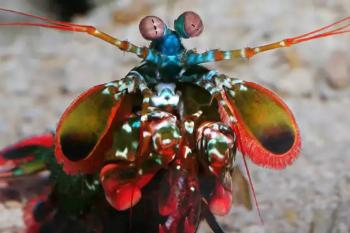
All animals, whether birds that fly, beetles that scurry, or worms living in the ocean depths, interact with the earth’s environment. We all live on the same planet with the same soil, water and air. We all require oxygen and water, and we all must eat to obtain organic molecules to build our bodies and stay alive. All animals move at least a part of their bodies through the environment or move the environment through their bodies to obtain oxygen and food; that movement may not be the same for all animals, but we do share commonalities.
In the 1800’s just by observing and studying and comparing animals, Darwin was able to theorize that animals all descended from a common ancestor. At that time, they didn’t know genes even existed. It was obvious to Darwin that the more alike we are physically, the higher the chance we are closely related.
The idea that groups of animals share body plans has been around since Aristotle first attempted to classify animals. And even before Darwin, there was the idea that during embryonic development those shared body plans became apparent. Animals that share a body plan don’t necessarily look alike as adults but most scientists now agree that during embryonic development or during some other time in their life cycle, they share the basic anatomical features of the phylum.
Chordates Share a Common Ancestor- But Do All Phyla?
For example, at some point during development, all chordates have a notochord, arch structures in their pharynx, a dorsal nerve chord and a post anal tail. Though these features are not present in all adults, their presence at some point during the life of a chordate, suggests that all chordates have a common ancestor. All members of a phylum, whether it’s cnidarians, echinoderms, or chordates share a common ancestor. But do all the phyla also share a common ancestor?
Genes Are Boss
The development of genetic tools reveals that animals share lots of genetic material. Not only do we share the genetic code that makes proteins, but we share many of the same regulatory genes that direct how our bodies are made. A large part of our genome are regulatory genes telling other genes what to do. Those same regulatory genes that tell a chordate embryo how to make a chordate body tell a cnidarian embryo how to make a cnidarian body. These regulatory genes are called homeobox genes.
Even though homeobox genes regulate the formation of the bodies of other organisms like plants and fungi, the homeobox genes that regulate the formation of the bilateral body plan of many animals are called HOX genes. In bilateral animals (e.g. worms, arthropods, echinoderms, vertebrates), among other functions, the HOX genes regulate the anterior-posterior patterning of the body plan. And unlike most genes they are clustered on the chromosomes.
Sustaining HOX Genes for Hundreds of Millions of Years!
The number of HOX genes varies wildly, but their presence suggests that all bilateral animals must share a common ancestor, an ancestor whose body was formed using HOX genes. Even though Cnidarians do not have a bilateral body, they do have HOX genes that regulate their oral-aboral body axis. Through hundreds of millions of years of evolution, these HOX genes have been conserved. And even though Sponges do not have HOX genes, they do have HOX-like genes that are even clustered on their chromosomes. Perhaps these sponge genes are precursors of HOX genes in other animals.
Thanks to the field of biology known as evolutionary developmental biology, or ‘evo-devo,’ we continue to learn more and more about the evolution of animals as never before.
Not only is there developing evidence that the same type of genes regulate the formation of animal bodies, but those animals all appeared over 500 million years ago in a geologically short period of time known as the Cambrian Explosion.
It is not understood exactly why no new body plans have evolved since the Cambrian. Perhaps it is because once those regulatory genes could make a body, that became the only way an animal could be constructed. For the last half a billion years, evolution has been adding all kinds of new features to those body plans to create the incredible diversity of animals alive today. But we all share a common ancestor, and we are more alike than you might think.
















